Noun Phrases in "Imaji Terindah" Novel By Sitta Karina: A Generative Transformation Analysis
Abstract
This article is about noun phrases that basically consists of a noun. The data used in this article is taken from the novel "Imaji Terindah" by Sitta Karina with a generative transformation approach. The theory of generative transformation is a system of rules consisting of a limited set of rules but capable of generating or creating a limited number of sentences. There are three stages followed in this research method, namely the stage of providing data. In this step, the listening method is used. Then in analyzing the data analysis, the author uses the distributional method. And the last stage presenting the results of data analysis. At this stage the author uses a formal method. The characteristic of noun phrases in this novel is the noun as the main element. Noun phrases is functioned the subject, predicate, and object. Based on the characteristics of noun phrases in this novel, the elements of noun phrases are grouped into two types, namely primary elements and modifier elements. In the novel "The most beautiful image" by Sitta Karina, there are many sentences using the 'yang' relator.
References
Badriyah W. (2018). Frasa Nomina Beratribut Nomina dalam Bahasa Indonesia. Jurnal Ilmiah Edikasi Dan Sosial, 9(1), 14–21. http://jiesjournal.com/index.php/jies/article/view/120.
Bahasa, P. (n.d.). Kamus Besar Bahasa Indonesia. https://kbbi.web.id/uang.
Bickford, J. A. (1991). Course In Basic Gramatical Analisys. Tucson AZ.
Chomsky, N. (1965). Aspects. Of The Theory Of Syntax. London: Mit Press.
Dardjowidjojo, S. (1987). Linguistik: Teori dan Terapan. Jakarta: Arca.
Dongalemba, R. M. (2018). Fungsi Eksternal dan Kategori Frase Nomina Bahasa Melayu Manado. Kajian Linguistik, 6(1), 39–51. https://doi.org/https://doi.org/10.35796/kaling.6.1.2018.24781.
Herwandar, R., & Piantari, L. L. (2017). Metonimia dan Metafora dalam Norma dan Eksploitasi Tipe Semantis Adjektiva Value Frasa Nomina Eye pada Coca. Jurnal Al Azhar Indonesia Seri Humaniora, 4(79–83). https://jurnal.uai.ac.id/index.php/SH/article/view/262.
Karina, S. (2005). Imaji Terindah. Terrentbooks.com.
Kinanti, K. P. (2020). Frasa Nomina Atributif dalam Bahasa Jawa Dialek Jawa Timur. Linguistika, 4(2), 95–104. https://doi.org/http://doi.org/10.25273/linguista.v4i2.6494.
Kridalaksana, H. (1993). Kamus Linguistik. Jakarta: Pt Gramedia Pusat Utama.
Samsuri. (1987). Analisis Bahasa. Jakarta: Erlangga.
Sudaryanto. (1993). Metode dan Aneka Teknik Analisis Bahasa.Yogyakarta: Duta Wacana University Press.
Suwena, I. K. (1997). “Frasa Nomina Bahasa Bali (Suatu Analisis Transformasi Generatif). Universitas Hasanuddin.
Authors who publish with Jurnal Ilmiah Lingua Idea agree to the following terms:
- Authors retain copyright and grant the journal right of first publication with the work simultaneously licensed under a Creative Commons Attribution License (CC BY-SA 4.0) that allows others to share the work with an acknowledgment of the work's authorship and initial publication in this journal.
- Authors are able to enter into separate, additional contractual arrangements for the non-exclusive distribution of the journal's published version of the work (e.g., post it to an institutional repository or publish it in a book), with an acknowledgment of its initial publication in this journal.
- Authors are permitted and encouraged to post their work online (e.g., in institutional repositories or on their website) prior to and during the submission process, as it can lead to productive exchanges, as well as earlier and greater citation of published work.



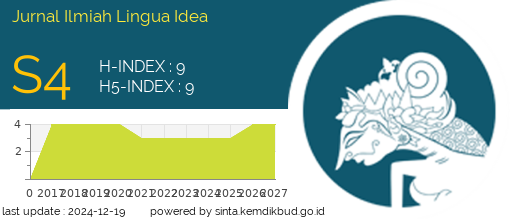
















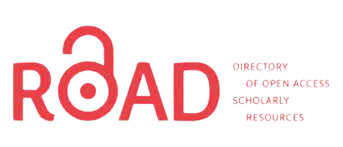
.png)
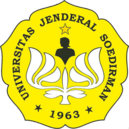

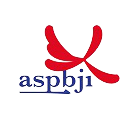
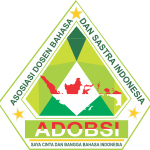
_.png)


